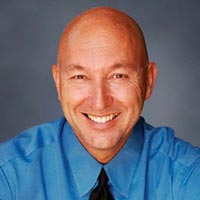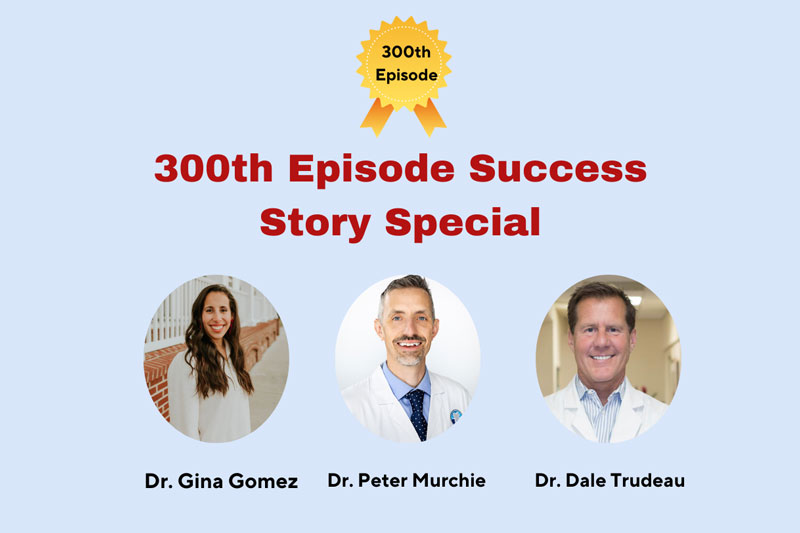Episode #302: You Can Have a Profitable Practice AND Serve Those In Need
Listen Now
Marketing is an essential part of any business. Whether reaching and growing your patients or raising awareness of your dental services, marketing will constantly keep you on top of the game if executed well.
You can use a variety of marketing practices to achieve your goals, but be aware of the typical pitfalls first. Unfortunately, many dentists unknowingly commit these worst marketing mistakes, jeopardizing their ability to achieve their business goals.
In this episode, Gary and Naren discuss the most common Marketing Mistakes You Must Avoid. Gary put together 4 common mistakes dentists make and explain how to overcome them by sharing his personal experiences and examples from real life.
Gary reveals the role Ekwa Marketing has had in assisting him in avoiding these mistakes over the years. If you’d like to discover more about how Ekwa Marketing can enable and grow your practice, you can book a free marketing strategy meeting here!
Naren: Hello everyone, welcome to the Less Insurance Dependence podcast, the official podcast of the Reducing Insurance Dependence Academy, www.rid.academy. Please consider this an invitation to become a member of RIDA as a gift from us in appreciation of your listenership. This is Naren, your co-host. Today’s topic is ‘The most common marketing mistakes you must avoid’ The most common marketing mistakes you must avoid.
Before we get into it, I have a quick announcement: We have a Thriving Dentist master class coming up on the 27th of July, 7.00 to 10.00 pm Eastern time, three hours of CE ‘The $2.5 million practice model. www. thrivingdentist.com/masterclass. Gary, this is one of the most popular master classes you do. Can you talk a little bit about it, please?
Gary: Yeah, you bet. You know, master class, the master classes we give are a three-hour online course. They’re done virtually, so you can take the course from the comfort of your home or office. But they’re done live so you can interact with me. It’s done livestream. This allows us to kind of take a deep dive into a particular topic. And the topic on the 27th of July is the $2.5 million practice model. Now, of course, there are many different successful practice models. It’s not a one size fits all. There are many different ones. But I’m often asked by dentists, "Is there a particular model that you really like?" And my answer would be this $2.5 million practice model. That would be a two-doctor practice. It could be an owner and an associate or it could be partners. If that was your interest, it could be done with partners. It’s got a strong hygiene department. Hygiene departments can be producing about a third of that total production, and it is one that absolutely can be defined as a thriving practice. Now, my definition of a thriving practice is one that provides personal, professional and financial satisfaction. Personal satisfaction means you’re taking care of patients you enjoy, surrounded by a team you love. Professional satisfaction means you’re doing more of the kind of dentistry that you love, whatever that is, whatever kind of dentistry you like to do, you’re doing more of it. And financial satisfaction, more self-explanatory, is that you’re being rewarded handsomely, financially for your care, skill, and judgment. And this is a model that would produce that, along with achieving an effective work-life balance, an effective work-life balance. I’m on a campaign to help more dentists achieve an effective work-life balance, and this is a model that can provide that. So you have enough time with your family. You have enough time for massive amount of CE to pursue the things you’re interested in dentistry, more times for your hobbies, for fitness, for all the things that you hold dear. And this is a model that can absolutely produce that. So, whether you’re interested in creating that, that $2.5 million practice model by yourself, if that’s the case and you’ll get a blueprint for that, or you can, there’s many of tips that you’ll be able to take away and apply the very next day in your practice. So hey, come join us. I look forward to seeing you at that next master class. Look forward to seeing you there.
Naren: Thank you, Gary. Now I’m really excited about today’s topic, The most common marketing mistakes you must avoid. You know, having coached 2,200 practices, I bet you have seen quite a few marketing mistakes.
Gary: Well, not only have I seen them, I’m not embarrassed to say I’ve made them. I made these mistakes myself. You know, in owning a practice in Life Smiles, I made those mistakes. And I’ve seen just some very, very interesting marketing mistakes that are made. And then I’ve made a lot of them myself. I’m not embarrassed saying that, you know, I wanted to own a practice so I can share with clients what works and what doesn’t work. So this episode is a way to help you avoid those mistakes so you don’t have to have the pain and suffering that I’ve seen happen and actually made myself as well.
Naren: Absolutely, and I think not only have you seen them, but you also realize that, you know, marketing is critical for every thriving practice. Right?
Gary: It’s got to be part of your foundation. You know, quality new patient flow is the lifeblood of any successful practice. And if you don’t have that, you’re going to have all kinds of speed bumps you bump into. So, quality new patient flow is very, very important. And one of those necessary ingredients of a successful practice. So I’ve got four that I’m going to outline in this episode. So we titled ‘The most common marketing mistakes you must avoid’. I’m going to go through the four most common ones, and you want to do everything you can to avoid these. I’m going to number them, so I can remember to cover all four of them. Number one, poor organic SEO: Now SEO stands for Search Engine Optimization. Hey, let’s face it, in the year 2022 and beyond, Google Marketing is all about digital today, digital. How does someone find anything today? They look it up on Google. So it’s all about digital and it’s all about Google. So organic SEO means you show up on page one when someone in your community is looking for a dentist, you show up on page one. And depending on what device is used, whether you’re using a laptop, a desktop, more commonly, a mobile device, mobile device when someone’s searching for a dentist, would most likely be their phone or a tablet, phone or tablet. Depending on what device you use, you’re going to want to be in the top ten of practices in your community because the top ten will show up on page one. By the way, organic also means that you’re not paying Google for this. You’re not paying ad dollars to Google. In fact, you’re earning your ranking on page one. So you got to be in the top ten. Now, for some of you, that’s easy. If you are in a town or a community that has eight dentists and you’re not on page one, well, we’ve got some real problems there. Would you agree, Naren?
Naren: Absolutely Gary.
Gary: Now, now for the rest of us, it’s a numbers game. I’m in Phoenix, Life Smiles is in Phoenix, Arizona. There are 1,400 practices with a Phoenix address, 1,400 Naren. That means we’ve got to be in the top ten of over 1,400 potential practices. And hey, thanks to your support at Ekwa, you’re the marketing agency that we use at Life Smiles, thanks to your support, you and your team, we are routinely on page one, even though that challenge seems almost insurmountable, right? And not only on page one, but we’re on page one for over 650 keywords and phrases. So really the solution to poor organic SEO is awesome organic SEO where you get listed on page one. All right. Number two, poor conversion rate: Mistake Number Two, the office has poor conversion rate. Now, what is conversion rate? Conversion rate is what percent of the new patients that call your office end up making a new patient appointment? What percent of the new patients that call your office end up making a new patient appointment? Most dentists have no idea what that statistic is. I mean, they know, they get the concept, but they don’t have any way of measuring it. They don’t know where the patients are coming from and they don’t know what percent actually make a new patient appointment. And let’s face it, as of right now, the telephone by far, far, far, far is the dominant way patients make an appointment with the dental office. Now, we do have real time online scheduling, but right now the public has been a little bit slow to adopt it, adopt that. And less than one percent of all dental appointments as of right now are made through real time online schedule.
That’ll change over time. But right now the conduit through which most new patients connect with your office the first time is the phone (is the phone). And so we’ve got to have a good conversion rate. Let me benchmark this for you. Using the Stephen Covey concept of ‘begin with the end in mind’, a conversion rate of 70 percent or higher is an A on the report card. That means, seven out of 10 potential new patients that call will make an appointment, make the new patient appointment. That would be an A on the report card. Sixty to 70 would be a B, 50 to 60 would be a C. And if you’re less than 60 percent, 50 percent excuse me, you’d be failing (you’d be failing). And many times we see as we track this, and we see it in our client base where we initially start tracking this and we see sadly failing numbers, we see 46 percent, 38 percent, 25 percent. And obviously those are all failing grades. But here’s the great news. With some training, we can get that to a passing grade C, but we can get it to an A or higher. I’ll not use a name on this one because I want to protect confidentiality, but the worst that I’ve ever seen was an office that, when we started, had a four percent conversion rate. Naren that means that out of 100 potential new patient calls, only four were making a new patient appointment. Now, if anything less than 50 is failing, what is four percent, Naren?
Naren: It’s like absolute failure.
Gary: Well, you have a letter you use in your alphabet in Canada, that would be a Z, Zee. Canadians use the term Z for Zee. In the US, we just call it a Zee. But that would be a Zee. (Naren: Yeah) Well, here’s the good news. With some training, now the team members that answered the phone had never had any training on this. They were winging it. These were good people with good hearts. They wanted the practice to succeed and with some training, very quickly, we got them from four percent, Naren to 56 percent. Now, that’s, that wasn’t where we wanted to end up, but, but that was a really remarkable first round of training. From there, we did more training and got them to 66 percent, and last month it was at 68 percent. We’re closing in on that A on the report card. And the doctor wanted to spend more money on marketing, wanted to spend more, and wanted to actually start doing some pay-per-click and some paid ads. His problem wasn’t that the phone wasn’t ringing. They just weren’t doing enough with the calls that were coming in. And we made that change from four percent to 68 percent without spending a nickel more on marketing. We just had to do something with the calls that were coming in. So poor conversion rate is the second most common mistake. The third, wait for it, wait for it, wait for it doc, wait for it. Ready? You are not answering your phone. I know that sounds absurd. “You know, Gary, that doesn’t apply to me.” But if you don’t have the data on this, you might be surprised. And I want to qualify this. You’re not answering your phone during business hours. Naren, would you agree if a call comes in at midnight, we’re not going to answer the phone?
Naren: Absolutely, nobody expects you to answer the phone. Even the person calling doesn’t expect you to answer the phone.
Gary: No, or on a Sunday, you are not expected to answer the phone. I’m talking about calls that come in during your business hours, and you wouldn’t believe what we see when we start tracking this. Offices that think that that’s not a problem in their practice, 42 percent of the time, calls go to voicemail during business hours, 48 percent of the time. Fifty four percent of the time they go to business hours. And let’s face it, if someone found you by a Google Search and the voicemail comes on, what will the, what will be the guaranteed behavior in 2022? That’s going to happen when the call goes to voicemail.
Naren: You know, when it goes to voicemail, the person who is calling you, i.e. the new patient, you know, goes to the next.
Gary: They hang up and they go to the next dental office on their screen in their Google Search.
Naren: Exactly.
Gary: They aren’t going to leave you a message. Hey, you know, it’s kind of a sad commentary today, but because we’re in such a fast-paced, you know, ‘I Want It Now’ world, most human beings have the attention span of a gnat today. I mean, right Naren?
Naren: Yes, exactly.
Gary: I mean, we do. I mean, I’ve done it myself. You know, I pull up Uber and discover that, you know, it says that the car is going to take 10 minutes to get to me. And what do I do? I pull up Lyft where I discover it’s three minutes and that’s going to be a lot better. So I’m going to cancel my Uber and do my Lyft, right?
Naren: Absolutely.
Gary: That’s human behaviour, yeah. So if you’re not answering the phone during business hours, let’s start answering the phone. Now, the first thing you need to do is find out your data on that. Your phone company can tell you, they will do that for you. Contact your phone company and say, "Hey, I’d like to know what percent of the time during business hours my phone goes to voicemail." They can give you that data and you might want to be sitting down when you get the report because I have seen some really crazy results and it might be happening in your office. If you’re not answering the phone, then that’s something we have to solve.
Naren: Absolutely, in any of these first three mistakes Gary talked about, if you want to learn more about what the benchmark is, what’s possible, you know, I would suggest booking a marketing strategy meeting with Lila, who is the director of marketing, the same person Gary spoke to before he started with us six years ago for Life Smiles. Lila would spend six hours researching you, finding out how well you are doing on SEO, you know, finding out the fundamentals. Are they all in place for Google to rank you hundreds of times, finding out how you are doing in terms of your call-tracking, the call answering, giving you what’s possible, all those data. So I think it’s a great use of time. Just find out where you are with regard to these mistakes.
Gary: Yeah, actually all three of those mistakes, poor SEO, poor conversion rate, and you’re not answering the phone. If you’re a client of Ekwa, as we are, you can provide that data, hard data, not not to guesswork, not educated guess (not clear), it’s hard data. All right, let me go to number four, Mistake Number Four, you’re booked too far out for the next new patient appointment. You are booked too far out. I remember this happened right before Covid, Naren, I was in a client office and doctor said, "You know Gary, so many things are really working well in my practice, the only thing I need is more new patients. That’s the only thing I need. That’s what’s between me and these lofty goals we’ve set." And I had looked ahead to see when his next new patient appointment was. Now, let me define the new patient I’m talking about. This is not an emergency new patient. You know, this is someone who says something like this, "Hey, I recently moved to town. I met my next-door neighbor. I asked her to recommend a dental office and they recommended you. And I’d like to make my appointment". Now, I knew, I had looked in this doctor’s schedule. I knew his next new patient appointment was six weeks out. He wanted to spend more money on marketing, get more calls, and yet the first available new patient appointment was six weeks out. I showed him that and his chin hit the counter. He literally was awestruck (0:16:40 not clear). He said, "Oh my gosh, I had no idea. I did not know it was that far out." It was six weeks out. So, we’ve got to correct that. By the way, the standard on that is to see a new patient ideally, now I’m going to be ideal here, in three business days or less from that call. Now that’s not easy to do, but I’ll bend a little bit and be a little bit flexible with you and say if you can get that in a week or less, that’s acceptable. Ideal would be three days or less, and we’ve got to solve that. Otherwise the patient, especially if they found you online, because at this point they don’t have any connection to you other than their search. They’re likely to go to the next office on the list.
So, let me recap: Four most common marketing mistakes you must avoid; Number one, poor organic SEO, Number two, poor conversion rate. You’re not converting the calls you get. Number three, you are not answering the phone. You might be surprised on that one. And number four, you are booked too far out for a new patient appointment. If you solve those four, your marketing is going to be massively more successful. You’ll get more quality new patients into your practice and it really will change your practice in so many positive ways.
Well, as we put a ribbon on this one today, I want to circle back and remind you that we’ve got that Thriving Dentist master class coming up on July 27th. The $2.5 million practice model, come join us, very inexpensive. You get three hours of CE. It’s less than a $100, probably the least expensive CE you can receive. And you’re going to learn a whole bunch about something you can apply the next day. I also want to remind you to book that marketing strategy meeting with Ekwa, especially if you want to know about how you’re doing when it comes to your marketing, data never lies. That would be the link. Actually it’s Ekwa, E-K-W-A /msm – marketing: msm stands for marketing strategy meeting. ekwa.com/msm. On that note, let me say thank you for the privilege of your time. We’re looking forward to connecting with you on the next Less Insurance Dependence podcast.
 One of Gary's most significant achievements as a dental practice management coach is transforming his own practice, LifeSmiles, from one that was infected with PPO plans, no effective marketing strategy, and an overhead of 80% to a very successful dental practice that is currently one of the top-performing practices in the US.
One of Gary's most significant achievements as a dental practice management coach is transforming his own practice, LifeSmiles, from one that was infected with PPO plans, no effective marketing strategy, and an overhead of 80% to a very successful dental practice that is currently one of the top-performing practices in the US.
 As CEO of Ekwa Marketing, Naren has over a decade of experience working with dental practices and helping them attract the ideal type of patients to their practices. It is his goal to help dentists do more of the type of dentistry they love with the help and support of effective digital marketing.
As CEO of Ekwa Marketing, Naren has over a decade of experience working with dental practices and helping them attract the ideal type of patients to their practices. It is his goal to help dentists do more of the type of dentistry they love with the help and support of effective digital marketing.



